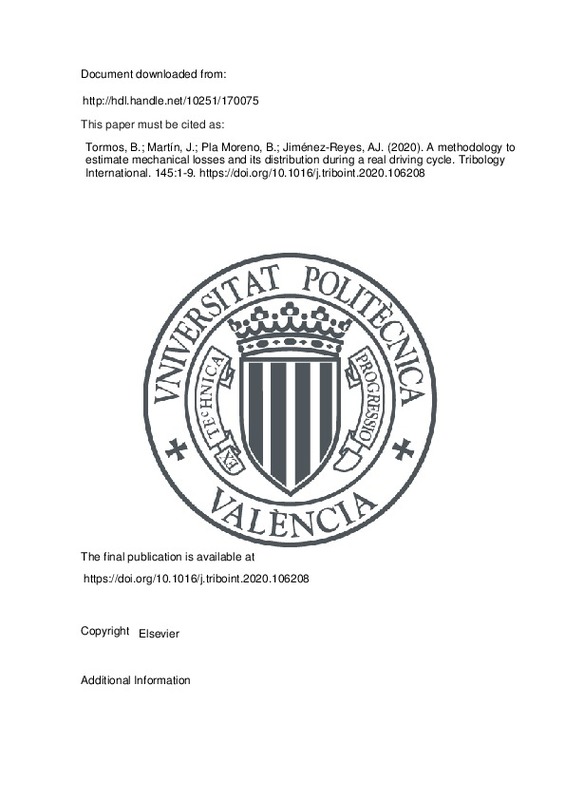Dente, S. M. R., & Tavasszy, L. (2018). Policy oriented emission factors for road freight transport. Transportation Research Part D: Transport and Environment, 61, 33-41. doi:10.1016/j.trd.2017.03.021
DEMIRBAS, A. (2007). Progress and recent trends in biofuels. Progress in Energy and Combustion Science, 33(1), 1-18. doi:10.1016/j.pecs.2006.06.001
Mwangi, J. K., Lee, W.-J., Chang, Y.-C., Chen, C.-Y., & Wang, L.-C. (2015). An overview: Energy saving and pollution reduction by using green fuel blends in diesel engines. Applied Energy, 159, 214-236. doi:10.1016/j.apenergy.2015.08.084
[+]
Dente, S. M. R., & Tavasszy, L. (2018). Policy oriented emission factors for road freight transport. Transportation Research Part D: Transport and Environment, 61, 33-41. doi:10.1016/j.trd.2017.03.021
DEMIRBAS, A. (2007). Progress and recent trends in biofuels. Progress in Energy and Combustion Science, 33(1), 1-18. doi:10.1016/j.pecs.2006.06.001
Mwangi, J. K., Lee, W.-J., Chang, Y.-C., Chen, C.-Y., & Wang, L.-C. (2015). An overview: Energy saving and pollution reduction by using green fuel blends in diesel engines. Applied Energy, 159, 214-236. doi:10.1016/j.apenergy.2015.08.084
Holmberg, K., & Erdemir, A. (2019). The impact of tribology on energy use and CO2 emission globally and in combustion engine and electric cars. Tribology International, 135, 389-396. doi:10.1016/j.triboint.2019.03.024
Bozza F, Bellis VD, Luigi T. EGR systems employment to reduce the fuel consumption of a downsized turbocharged engine at high-load operations. In: 69th conference of the Italian thermal engineering association. 2014.
Wirth M, Schulte H. Downsizing and stratified operation - An attractive combination based on a spray-guided combustion system. In: International conference on automotive technologies. 2006.
Benajes, J., Martín, J., García, A., Villalta, D., & Warey, A. (2017). Swirl ratio and post injection strategies to improve late cycle diffusion combustion in a light-duty diesel engine. Applied Thermal Engineering, 123, 365-376. doi:10.1016/j.applthermaleng.2017.05.101
Koszela, W., Pawlus, P., Reizer, R., & Liskiewicz, T. (2018). The combined effect of surface texturing and DLC coating on the functional properties of internal combustion engines. Tribology International, 127, 470-477. doi:10.1016/j.triboint.2018.06.034
Holmberg, K., & Erdemir, A. (2017). Influence of tribology on global energy consumption, costs and emissions. Friction, 5(3), 263-284. doi:10.1007/s40544-017-0183-5
Hongwen, H., Jinquan, G., Jiankun, P., Huachun, T., & Chao, S. (2018). Real-time global driving cycle construction and the application to economy driving pro system in plug-in hybrid electric vehicles. Energy, 152, 95-107. doi:10.1016/j.energy.2018.03.061
Sentoff, K. M., Aultman-Hall, L., & Holmén, B. A. (2015). Implications of driving style and road grade for accurate vehicle activity data and emissions estimates. Transportation Research Part D: Transport and Environment, 35, 175-188. doi:10.1016/j.trd.2014.11.021
Faria, M. V., Duarte, G. O., Varella, R. A., Farias, T. L., & Baptista, P. C. (2019). How do road grade, road type and driving aggressiveness impact vehicle fuel consumption? Assessing potential fuel savings in Lisbon, Portugal. Transportation Research Part D: Transport and Environment, 72, 148-161. doi:10.1016/j.trd.2019.04.016
Oglieve, C. J., Mohammadpour, M., & Rahnejat, H. (2017). Optimisation of the vehicle transmission and the gear-shifting strategy for the minimum fuel consumption and the minimum nitrogen oxide emissions. Proceedings of the Institution of Mechanical Engineers, Part D: Journal of Automobile Engineering, 231(7), 883-899. doi:10.1177/0954407017702985
Montazeri-Gh M, Naghizadeh M. Development of car drive cycle for simulation of emissions and fuel economy, In: SCS Europe BVBA. 2003.
Tormos, B., Ramírez, L., Johansson, J., Björling, M., & Larsson, R. (2017). Fuel consumption and friction benefits of low viscosity engine oils for heavy duty applications. Tribology International, 110, 23-34. doi:10.1016/j.triboint.2017.02.007
Macián, V., Tormos, B., Ruiz, S., & Miró, G. (2016). Low viscosity engine oils: Study of wear effects and oil key parameters in a heavy duty engine fleet test. Tribology International, 94, 240-248. doi:10.1016/j.triboint.2015.08.028
Macián, V., Tormos, B., Ruíz, S., & Ramírez, L. (2015). Potential of low viscosity oils to reduce CO2 emissions and fuel consumption of urban buses fleets. Transportation Research Part D: Transport and Environment, 39, 76-88. doi:10.1016/j.trd.2015.06.006
Macián, V., Tormos, B., Bermúdez, V., & Ramírez, L. (2014). Assessment of the effect of low viscosity oils usage on a light duty diesel engine fuel consumption in stationary and transient conditions. Tribology International, 79, 132-139. doi:10.1016/j.triboint.2014.06.003
Payri, F., Luján, J. M., Martín, J., & Abbad, A. (2010). Digital signal processing of in-cylinder pressure for combustion diagnosis of internal combustion engines. Mechanical Systems and Signal Processing, 24(6), 1767-1784. doi:10.1016/j.ymssp.2009.12.011
Fraser, N., Blaxill, H., Lumsden, G., & Bassett, M. (2009). Challenges for Increased Efficiency through Gasoline Engine Downsizing. SAE International Journal of Engines, 2(1), 991-1008. doi:10.4271/2009-01-1053
Ciuffo, B., & Fontaras, G. (2017). Models and scientific tools for regulatory purposes: The case of CO2 emissions from light duty vehicles in Europe. Energy Policy, 109, 76-81. doi:10.1016/j.enpol.2017.06.057
Benajes, J., García, A., Monsalve-Serrano, J., & Lago Sari, R. (2018). Fuel consumption and engine-out emissions estimations of a light-duty engine running in dual-mode RCCI/CDC with different fuels and driving cycles. Energy, 157, 19-30. doi:10.1016/j.energy.2018.05.144
[-]







![[Cerrado]](/themes/UPV/images/candado.png)


